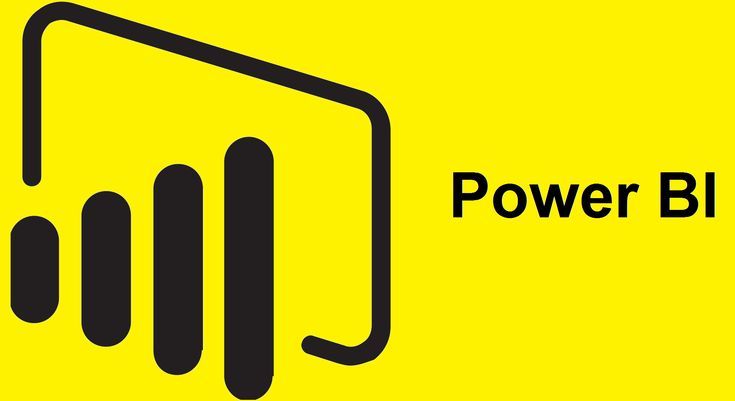Building an effective sales dashboard in Power BI isn’t just about creating pretty charts; it’s about transforming raw sales data into actionable insights that drive revenue growth. This comprehensive guide will walk you through the entire process, from data preparation to advanced analytics, with practical examples and code snippets you can implement immediately.

Understanding Your Sales Data Architecture
Before diving into Power BI, you need to understand what data you’re working with and how it’s structured. Most sales organizations have data scattered across multiple systems:
Core Data Sources
CRM Systems (Salesforce, HubSpot, Dynamics 365): Lead information, opportunity pipeline, customer interactions, and deal progression.
ERP Systems (SAP, Oracle, NetSuite): Order processing, invoicing, inventory levels, and fulfillment data.
Marketing Automation (Marketo, Pardot, Mailchimp): Campaign performance, lead scoring, and attribution data.
Financial Systems (QuickBooks, Xero, SAP): Revenue recognition, commission calculations, and profitability metrics.
External Data: Market data, competitor pricing, economic indicators, and industry benchmarks.
Data Structure Considerations
Your sales data typically follows this hierarchy:
- Account Level: Company information, industry, size, geographic location
- Contact Level: Individual decision-makers, roles, engagement history
- Opportunity Level: Deal size, stage, probability, expected close date
- Activity Level: Calls, meetings, emails, proposals, and other interactions
- Product Level: Items sold, pricing, margins, and categories
Phase 1: Data Preparation and Modeling
Step 1: Data Extraction and Cleaning
Start by connecting to your primary data sources. Here’s how to handle common scenarios:
Salesforce Connection:
1. Use the Salesforce connector in Power BI
2. Authenticate with your Salesforce credentials
3. Select relevant objects: Accounts, Contacts, Opportunities, Activities
4. Apply initial filters to reduce data volume (e.g., last 2 years)
Excel/CSV Files:
1. Use “Get Data” → “File” → “Excel” or “Text/CSV”
2. Navigate to your file location
3. Select relevant sheets/tables
4. Preview and clean data in Power Query Editor
SQL Database:
1. Use “Get Data” → “Database” → “SQL Server”
2. Enter server details and database name
3. Write custom queries for complex data extraction
4. Optimize queries for performance
Step 2: Data Transformation in Power Query
This is where the real work happens. Use Power Query Editor to:
Remove Duplicates:
1. Select the column with duplicates
2. Go to Home → Remove Rows → Remove Duplicates
3. Verify results in data preview
Handle Missing Values:
1. Select the column with null values
2. Transform → Replace Values
3. Replace null with appropriate default (0 for numbers, “Unknown” for text)
Create Calculated Columns:
DaysInStage = Duration.Days(DateTime.LocalNow() – [LastStageChangeDate])
DealCategory = if [Amount] > 100000 then “Enterprise”
else if [Amount] > 50000 then “Mid-Market”
else “SMB”
Step 3: Building the Data Model
Create relationships between your tables:
Key Relationships:
- Opportunities → Accounts (Many-to-One)
- Opportunities → Contacts (Many-to-One)
- Activities → Opportunities (Many-to-One)
- Orders → Opportunities (Many-to-One)
Best Practices:
- Use integer keys for better performance
- Create a date dimension table for time-based analysis
- Implement role-playing dimensions (e.g., Created Date vs. Close Date)
- Set up bidirectional filters carefully to avoid circular dependencies
Phase 2: Core Dashboard Development
Dashboard 1: Sales Overview (Executive Level)
This high-level dashboard provides C-suite visibility into overall sales performance.
Key Metrics:
Total Revenue = SUM(Sales[Amount])
Revenue Growth = ([Current Period Revenue] – [Previous Period Revenue]) / [Previous Period Revenue]
Win Rate = DIVIDE(COUNT(Opportunities[Won]), COUNT(Opportunities[Total]), 0)
Average Deal Size = AVERAGE(Sales[Amount])
Sales Cycle Length = AVERAGE(Sales[Days to Close])
Visualizations:
- KPI Cards: Revenue, growth percentage, win rate
- Line Chart: Monthly revenue trends with YoY comparison
- Funnel Chart: Pipeline progression by stage
- Donut Chart: Revenue by product category
- Map: Geographic revenue distribution
Dashboard 2: Pipeline Management (Sales Manager Level)
Focused on pipeline health and forecasting accuracy.
Key Metrics:
Pipeline Value = SUM(Opportunities[Amount])
Weighted Pipeline = SUMX(Opportunities, [Amount] * [Probability])
Forecast Accuracy = 1 – ABS([Actual] – [Forecasted]) / [Forecasted]
Pipeline Velocity = [Pipeline Value] / [Average Sales Cycle]
Advanced Calculations:
Weighted Pipeline by Stage =
SUMX(
FILTER(Opportunities, Opportunities[Stage] = “Qualification”),
Opportunities[Amount] * 0.2
) +
SUMX(
FILTER(Opportunities, Opportunities[Stage] = “Proposal”),
Opportunities[Amount] * 0.6
) +
SUMX(
FILTER(Opportunities, Opportunities[Stage] = “Negotiation”),
Opportunities[Amount] * 0.8
)
Visualizations:
- Waterfall Chart: Pipeline changes over time
- Stacked Column Chart: Opportunities by stage and rep
- Gauge Chart: Pipeline health score
- Table: Top opportunities with drill-down capability
Dashboard 3: Individual Performance (Sales Rep Level)
Designed for individual contributors to track their performance.
Key Metrics:
Quota Attainment = [Actual Revenue] / [Quota]
Activity Score = ([Calls] * 1) + ([Meetings] * 3) + ([Emails] * 0.5)
Conversion Rate = [Closed Won] / [Total Opportunities]
Average Time to Close = AVERAGE([Close Date] – [Created Date])
Visualizations:
- Gauge: Quota attainment percentage
- Calendar Heatmap: Activity patterns
- Scatter Plot: Activity vs. results correlation
- Ranking: Peer comparison charts
Phase 3: Advanced Analytics Implementation
Predictive Analytics
Use Power BI’s AI capabilities to enhance your dashboard:
Forecasting:
1. Select your revenue time series visualization
2. Click Analytics pane → Forecast
3. Configure forecast length (e.g., 3 months)
4. Set confidence intervals (typically 95%)
5. Review and adjust seasonal patterns
Key Influencers Visual:
1. Add the Key Influencers visual to the report
2. Set “Analyze” to your target metric (e.g., Won/Lost)
3. Set “Explain by” to relevant dimensions (Industry, Deal Size, etc.)
4. Power BI will automatically identify the top factors
Custom Calculations and Measures
Time Intelligence:
YoY Revenue Growth =
VAR CurrentPeriod = SUM(Sales[Amount])
VAR PreviousYear = CALCULATE(
SUM(Sales[Amount]),
DATEADD(Calendar[Date], -1, YEAR)
)
RETURN
DIVIDE(CurrentPeriod – PreviousYear, PreviousYear, 0)
Rolling 12M Average =
CALCULATE(
AVERAGE(Sales[Amount]),
DATESINPERIOD(Calendar[Date], LASTDATE(Calendar[Date]), -12, MONTH)
)
Cohort Analysis:
Acquisition Cohort =
CALCULATE(
DISTINCTCOUNT(Customer[CustomerID]),
FILTER(
Customer,
Customer[First Purchase Date] >= [Start Date] &&
Customer[First Purchase Date] <= [End Date]
)
)
Performance Optimization
DAX Optimization:
Efficient Measure =
SUMX(
FILTER(Sales, Sales[Region] = “North America”),
Sales[Amount]
)
Inefficient Measure =
CALCULATE(
CALCULATE(
CALCULATE(SUM(Sales[Amount]), Sales[Region] = “North America”),
Sales[Year] = 2024
),
Sales[Product] = “Software”
)
Model Optimization:
- Use star schema design patterns
- Implement proper data types (integers for IDs, dates for time fields)
- Create calculated columns in Power Query, not DAX, when possible
- Use aggregation tables for large datasets
Phase 4: Interactive Features and User Experience
Dynamic Filtering
Create interactive filters that enhance user experience:
Slicer Sync:
1. Select all relevant slicers
2. Go to View → Sync Slicers
3. Configure which slicers sync across pages
4. Set default values for common filters
Drill-Through Pages:
1. Create a detailed page for deep-dive analysis
2. Add drill-through field (e.g., Sales Rep)
3. Configure drill-through filters
4. Test navigation from summary to detail
Conditional Formatting
Make your data tell a story visually:
Performance Indicators:
1. Select a table or matrix visual
2. Format → Conditional Formatting → Background Color
3. Set rules:
– Green: Above target (>100%)
– Yellow: Near target (80-100%)
– Red: Below target (<80%)
Data Bars:
1. Select the relevant column in the table
2. Conditional Formatting → Data Bars
3. Configure minimum and maximum values
4. Choose a color scheme aligned with the brand
Mobile Optimization
Create mobile-friendly layouts:
Mobile Layout:
1. Switch to Mobile Layout view
2. Rearrange visuals for vertical scrolling
3. Prioritize key metrics at the top
4. Use touch-friendly filters
5. Test on actual mobile devices
Phase 5: Automation and Deployment
Data Refresh Configuration
Set up automatic data updates:
Scheduled Refresh:
1. Publish report to Power BI Service
2. Go to Dataset Settings
3. Configure data source credentials
4. Set refresh schedule (daily, hourly, etc.)
5. Enable failure notifications
Real-time Updates:
1. Connect using DirectQuery mode
2. Configure row-level security if needed
3. Monitor performance and query optimization
4. Set up alerts for threshold breaches
Security and Governance
Row-Level Security (RLS):
[Sales Rep] = USERNAME()
[Manager] = LOOKUPVALUE(
Users[Manager],
Users[Email],
USERNAME()
)
App Workspace Setup:
1. Create a dedicated workspace for the sales team
2. Add appropriate members with correct permissions
3. Create an app for easy distribution
4. Set up content governance policies
Real-World Implementation Examples
Example 1: SaaS Company Dashboard
A software company implemented comprehensive sales tracking:
Data Sources: Salesforce, Stripe, Intercom, Google Analytics
Key Metrics: MRR, ARR, churn rate, customer acquisition cost
Special Features: Cohort analysis, subscription health scoring
Implementation Code:
Monthly Recurring Revenue =
CALCULATE(
SUM(Subscriptions[Monthly Value]),
Subscriptions[Status] = “Active”
)
Customer Lifetime Value =
DIVIDE(
[Monthly Recurring Revenue],
[Monthly Churn Rate],
0
)
Example 2: Manufacturing Sales Dashboard
A manufacturing company tracking complex B2B sales:
Data Sources: SAP, CRM, production systems
Key Metrics: Quote-to-order ratio, production capacity utilization
Special Features: Inventory impact on sales, seasonal demand patterns
Implementation Code:
Quote to Order Ratio =
DIVIDE(
DISTINCTCOUNT(Orders[Quote ID]),
DISTINCTCOUNT(Quotes[Quote ID]),
0
)
Capacity Utilization Impact =
SUMX(
Orders,
IF(
Orders[Delivery Date] > [Capacity Date],
Orders[Amount] * 0.8,
Orders[Amount]
)
)
Testing and Validation
Data Accuracy Testing
1. Compare Power BI totals with source system reports
2. Test edge cases (null values, duplicates, date ranges)
3. Validate calculations with manual spreadsheet checks
4. Cross-reference with financial reports
Performance Testing
1. Test with full data volume, not just samples
2. Monitor query performance in Performance Analyzer
3. Test concurrent user scenarios
4. Validate mobile performance on different devices
User Acceptance Testing
1. Create test scenarios for each user type
2. Gather feedback on visualization clarity
3. Test navigation and filtering functionality
4. Validate business logic with domain experts
Maintenance and Evolution
Regular Maintenance Tasks
- Monthly: Review data quality and refresh performance
- Quarterly: Update business logic and add new metrics
- Annually: Comprehensive architecture review and optimization
Continuous Improvement
- Monitor usage analytics to identify popular reports
- Gather user feedback through surveys and interviews
- Stay updated with new Power BI features and capabilities
- Implement advanced analytics as business needs evolve
Troubleshooting Common Issues
Performance Problems
Problem: Slow report loading
Solution:
1. Optimize DAX measures
2. Reduce data model size
3. Use aggregation tables
4. Implement proper relationships
Data Accuracy Issues
Problem: Numbers don’t match source systems
Solution:
1. Check data transformation logic
2. Verify relationship configurations
3. Validate date filtering
4. Review calculation contexts
User Adoption Challenges
Problem: Low dashboard usage
Solution:
1. Simplify complex visualizations
2. Provide training and documentation
3. Create role-specific views
4. Implement the change management process
Conclusion

Building an effective sales dashboard in Power BI requires careful planning, technical expertise, and a deep understanding of sales processes. The key to success lies in starting with clear business requirements, implementing robust data architecture, and continuously iterating based on user feedback.
Remember that a dashboard is only as good as the decisions it enables. Focus on creating actionable insights rather than impressive visualizations. Start with core metrics, ensure data accuracy, and gradually add sophistication as your team becomes more comfortable with the platform.
The investment in a well-designed sales dashboard pays dividends through improved forecasting accuracy, better pipeline management, and data-driven sales strategies. Take the time to build it right, and your sales team will have a powerful tool to drive revenue growth and achieve their targets consistently.